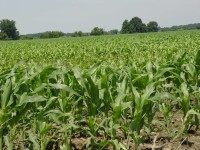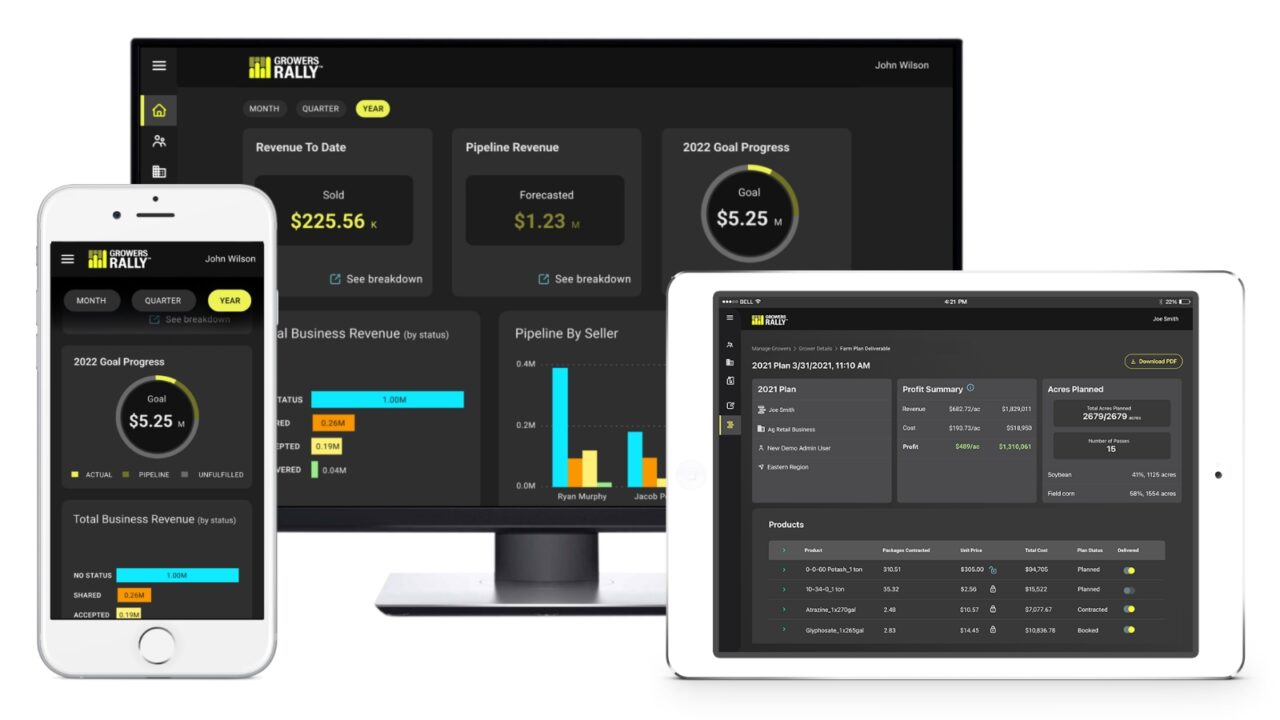Scouting Advice For Year Ahead

Scouting success stories are legion. Soybean aphids spotted and zapped before yields go south. Nutrient-deficient plants found and fed before the crop falters. But these happy endings come at a price, and dealers have been weighing the value of offering crop scouting services for years.
Some retailers are doing a lot more scouting in these days just because there are so many more problems to find — over a season that can stretch from March through September. Here are insights on how several companies have handled the challenges.
At What Cost
Many of the dealers we talked with wrestle with the whole pricing picture. Some offer free scouting or monitoring as part of an input purchase or as simply good customer service. Others have set up a specific fee programs.
Ed Sand, president of Sands of Iowa Ag Services, Marcus, IA, says his company offers scouting expertise for a fee, but it’s a tough sell. “We do so much of it for free, to give full service. It’s always a struggle to get producers to sign up for additional fees when they figure you’re out there looking already,” he says.
Kevin Knudtson, agronomist at Landmark Services Cooperative, Juda, WI, says his team doesn’t charge for scouting because they find enough problems to address in fields to generate income from prescribed products. The company has tried charging based on a pre-set number of visits. The drawback? When staff found a problem in one grower’s field, they’d want to do a more intense schedule for the rest of their customers nearby. “Our agronomists — who are out every day in the geographies they cover — want to be the first to alert their growers if there is a problem,” says Knudtson.
Crop Production Services (CPS), Attica, OH, charges a per-acre fee for fields enrolled in its SoyWatch program. These fields receive a scouting trip with reports and recommendations every two weeks, says Brent Kagy, crop consultant at CPS. In some cases, as when soybean aphids arrive, spot checks will kick up to three-day intervals to monitor the quickly changing populations. For intermittent scouting trips, such as those with a plant health program, the service is supplied as a value addition to a chemistry purchase.
Kevin Black, technical manager for insecticides and fungicides with GROWMARK, Bloomington, IL, notes the company differentiates between crop monitoring and crop scouting. Monitoring is what the company expects each of its crop specialists, each salesman to do, visiting fields periodically to stay on top of pests and problems hitting fields. “Scouting delineates a bit more formal program,” he explains.
Huge Investment
Many dealers we talked with warn of the time and manpower a scouting program demands. The days of scouting predominantly for weeds, doing a clean-up treatment when they’re spotted, and kicking back after July 1 are long gone, Knudtson notes.
Says Black: “It’s a huge investment in time and effort, and the grower needs to understand that it is not cheap to provide this service.”
Indeed, Darrell Fellows, agronomy division manager with Ag Valley Coop, Edison, NE, says his company has brought on a new person for scouting, but it’s too early to tell if the move has paid off. Ag Valley also hires college students as summer interns who scout fields as part of their responsibilities. Fellows has hired seven so far for this season. One big problem with the interns is they have to return to school in mid-August, leaving the company in the final key 30 days of the season.
Kagy emphasizes that “for a subscription program to succeed, all commitments must be kept.” He’s found it best to hire a summer employee with field scouting as his sole responsibility. “We all too easily get in the habit of putting out fires and hoping to catch up later. It’s a relief to know that a designated employee was watching customers’ fields daily,” he says. Kagy assures growers that this staff does not mean he won’t be visiting their fields personally, but this approach helps him to be more efficient.
Then too, staff training can take considerable time and energy. At CPS, Kagy says, “We try to begin the program with a two-day classroom style training session, and as crops begin to develop we spend in-field time with the beginning scouts.”
At Landmark, Knudtson says agronomists spend a “ton of time” in the off-season learning what to look for in their geographies, whether it’s insects, diseases, or nutrient deficiencies. “And there’s four times more stuff to keep an eye out for than there has been in the past,” he laments.
To help keep growers’ scouting demands workable, Black suggests talking to a customer to ascertain specific needs, and then tailoring a program to address those issues. “If a grower says he’s been worried about Western bean cutworm, don’t spend the season scouting for everything else, just help him work with the cutworm,” Black says.
Retailers find scouting can just be good business. “Many times before we make a recommendation, we want to look at the situation,” says Fellows. Sand adds that while a company may not have a written guarantee for its work, “you’re always going back to those fields looking to make sure you did a good job.”
Ominous Year Ahead?
This season, dealers have a variety of problems to look for. Seeing this is the “on” year for soybean aphids, many scouts will be watching closely for the pest. Kagy reports that the first year the aphids moved into Ohio, few agronomists there knew what the strange insect was and if there would be any effect on crop yield. “We identified some in SoyWatch fields, and by researching the pest problems in Canada were able to confidently recommend appropriate treatment,” describes Kagy. Growers reported an eight- to 12-bushel yield improvement where they treated.
“Aphids are always a concern because we can easily get up to 25,000 to 30,000 acres that need to be sprayed. That would be a big swing from last year when we sprayed very little for aphids,” says Sand.
With news of the new stink bugs (brown marmorated, red banded), Black says GROWMARK teams — particularly to the East and South — will be asking more questions, and growers will be “looking a little more intently at their crops.”
Black says with the influx of these new pests, including the soybean aphid, experts are starting to look more at the soybean pest complex. “There are a lot of questions about how these pests interact when they are in the same field together,” he says. He also sees a strong, growing awareness in the ag community that thresholds in general are “probably not completely up to date. They need to be re-examined.”
More than one dealer mentioned the need to monitor pockets of herbicide resistance. And scouts will be on the lookout for gray leaf spot in corn and SDS (sudden death syndrome) and white mold in soybeans.
Just last year, CPS Attica added NutriScription tissue testing to the firm’s scouting regimen. The program adds information about what is going on nutrition-wise inside that plant that goes beyond visual symptoms.
Landmark’s Knudtson is optimistic about the additional scouting his company is doing for nutrient deficiencies. Last year, the company pulled some 250 tissue samples to help evaluate nutrient deficiencies early in the growing season.
In 2011, Kagy says CPS is launching an OptiYield program as a trial with a number of growers. The goal is to help push growers’ soybean yields to previously unseen levels. This will be accomplished through more frequent monitoring and prescriptions of the ideal yield-protecting and enhancing products. A series of checks will monitor performance expectations on each farm.
Black has found that more people are looking at scouting because of the new technologies that have come along recently, including fungicides applications for plant health and increases interest in insecticide use on soybeans. “It’s driving the question of, ‘Should we be doing this, and/or do we actually have the pests and diseases out there that justify this?'”
Fellows would warn dealers not to overlook the potential for problems in fields and the potential for scouting business, even in this day of high-tech seed. “The thought process might be that we don’t need to scout fields like we did in the past because we have so much resistance in the seed,” he says. “I believe the progressive producer is still after that highest return on investment, and it still requires crop scouting or consulting.”





